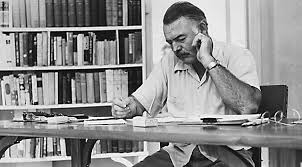Images via macfound.org and wiriko.org.
Playwright Sarah Ruhl makes a crucial observation in “The Necessary,” an essay from her book (highly recommended!) 100 Essays I Don’t Have Time to Write.
“What seems like the least necessary thing in your play might be the most necessary thing. What seems like the most necessary thing in your play might be the least necessary thing. Maurice Maeterlinck elaborates on this point in his essay‘The Tragical in Daily Life’: ‘The only words that count in the play are those that at first seemed useless . . . Side by side with the necessary dialogue will you almost always find another dialogue that seems superfluous; but examine it carefully, and it will be borne home to you that this is the only one that the soul can listen to . . . for here alone is it the soul that is being addressed.’
Be suspicious of an expert who tells you to cut a seemingly unnecessary moment out of your play. The soul of your play might reside there, quietly, inconspicuously, glorying in its unnecessariness, shining forth in its lack of necessity to be. The word expert was invented after the Renaissance, a time when plays sallied forth in all their beautiful ignorance.”
Sarah Ruhl
“The Necessary”
100 Essays I Don’t Have Time to Write, pp. 40-41
Consider, for instance, the famous line from The Godfather, after two soldiers of the Corleone family have killed one of their associates. The senior of those two, Peter Clemenza (portrayed by Richarad S. Castellano) instructs his underling, "Leave the gun . . . take the cannoli." As it turns out, the second half of the line, "take the cannoli" was an ad lib from Castellano. Even if it had not been improvised, in storytelling terms, it can be declared superfluous, unnecessary. Yet many viewers might agree with Ruhl that the soul of the movie shines forth in that line.
Tom Rosqui, left, as Rocco and Richard S. Castellano, right, as Peter Clememza.
Image via verifiedtrends.com.
Another illustration of Ruhl's principle can be found in an anecdote about the writer Wilhelm Mach related by film director Krzysztof Kieślowski:
“This Mach was at some screening. And Mach says, ‘I liked the film very much. I liked it and especially that scene at the cemetery.’ He says, ‘I really liked the guy in the black suit at the funeral.’ The director says, ‘I’m very sorry but there wasn’t any guy in a black suit.’ Mach says, ‘How come? He stood on the left-hand side of the frame, in the foreground, in a black suit, white shirt and black tie. Then he walked across the right-hand side of the frame and moved off.’ The director says, ‘There wasn’t any guy like that.’ Mach says, ‘There was. I saw him. And that’s what I liked most in the film.’”
Kieślowski on Kieślowski
(translated and edited by Danusia Stok), pp. 158-159
So unnecessary was this character to the demands of storytelling that the director had no idea he was in the film! And yet for the viewer, Mach, this unnecessary presence was everything.
A wonderful demonstration of Ruhl’s principle can be found in the artwork of sculptor and media artist Cyrus Kabiru (whose work is featured in the outstanding video project Afripedia). One series of Kabiru’s artworks are presented as eyeglass frames.
"Africana Eyelashes," 2014
image via ckabiruart.daportfolio.com
"Zulu Mask," 2010
image via ckabiruart.daportfolio.com
"Istanbul Mask," 2013
image via ckabiruart.daportfolio.com
"Westgate," 2013
image via ckabiruart.daportfolio.com
Note how the power of these works is partly anchored in the absence of functionality. In fact, Kabiru assembles his artwork out of trash, materials that the world has declared useless. One might not imagine wearing these artworks except that one can’t resist imagining it. They appear to bestow some mystical power, as if their wearer sees something that we don’t.
These glasses are magic, our minds tell us, precisely because of how their beauty emerges from superfluous ornaments and extravagantly impractical designs. It is in these elements where the soul of Kabiru’s art, as Ruhl might say, shines forth “in its lack of necessity to be,” which is why Kabiru's wonderful creations are indeed most necessary.
Thank you for reading.


































